Click to view our Accessibility Statement or contact us with accessibility-related questions






PRODUCTS YOU MAY LIKE
Trending Posts in Audiophile

Simthaniel
Rigs
Modded headphones with qudelix at the core
When I received the Qudelix 5K, I had already modified a pair of Superlux HD-681 headphones. I previously soldered my own balanced connections to the drivers, providing multiple ways to connect and...
Apr 14, 2024

brothamike
A decent set of IEMs
I am in the midst of a 300 hour burn-in but, I will say I am enjoying how this set sounds so far. Before I received these which was btw late by a few weeks, I purchased a Sony/Kimber Kable MMCX...
Apr 12, 2024
merrick97
Should I exchange the PC38X for better headphones?
I bought the PC38X headphones FOR GAMING and they are great, but I have NO use for a Microphone since I don't do competitive gaming and I was wondering if there were better headphone options at a similar price without a headphone, where (presumably) more of the cost was put into making it sound better. I also find that my PC38X don't get quite as loud as I would like and I was wondering if a cheap amp like the iFi Go link would draw a little more volume out of my phones. https://www.amazon.com/dp/B0BN6MM822?psc=1&ref=ppx_yo2ov_dt_b_product_details I went with the PC38X since it was considered the best bang for buck headphones. I care most about using spatial apps like DOlby Atmos and DTS Headphone:X. Suggestions are welcome.
Apr 11, 2024

LostnAmerica
Sound Signature of the Grell Project.
Wondering what type of sound signature the Drop Grell project headphones will have or trying to attain. Any update would be appreciated.
Apr 8, 2024

Fabulous
Looking for a gaming/content audio setup
Hello! I'm looking for recommendations on audio setups. I'd be planning on using it mostly for gaming. Preferably I'd like a pair of large closed back headphones since I have a big head and jaw. I'd also like to hear myself through my mic with mic monitoring. As far as budget goes, I don't really have one. But under 600$ would be nice. I can go higher if needed. The audio setup would be connected to a high performance PC. Thank you in advance for any recommendations!
Apr 4, 2024

1plsd
$10 Drop Coupon Email not sent?
Trying to buy some gear off Drop for the first time. I was told I would receive an email with a welcome to drop $10 off promo. I never received that email. Drop was able to send me emails for my login token and email for Password update. But for some reason the $10 off coupon was never sent to me.
Mar 31, 2024

NMPacella
New here
Hello, I just joined, primarily for the audiophile products. Looking at purchasing the NHT C3 speakers for our new living room. Space is about 15 feet wide by 33 long and they will fire long ways. Space is just for general listening, music room with all equipment is downstairs, so hoping they will fill it with sound nicely. Cheers.
Mar 18, 2024
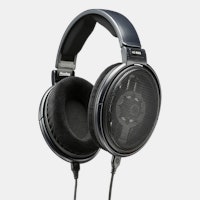
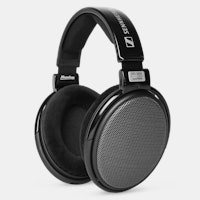

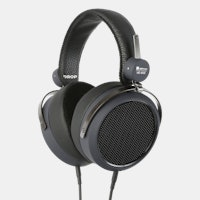
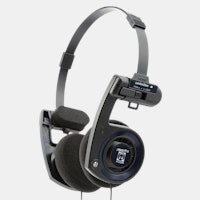
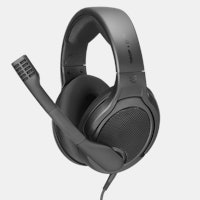
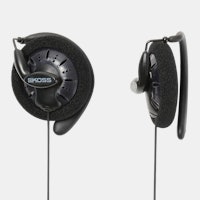
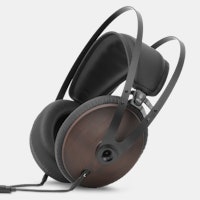
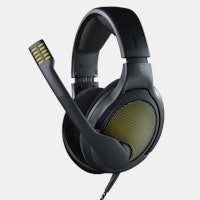
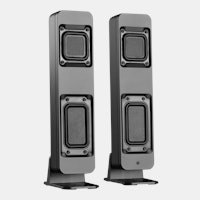
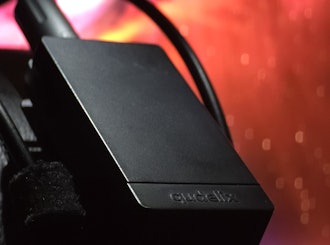
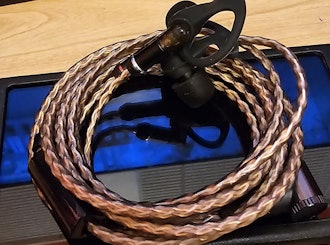
You need good equipment, a quiet listening environment and quality recordings to get the most out of music. When you hear details you've never heard before in your favorite music, then you'll get it.
Recording formats are just one piece of the puzzle. MP3s on my iPod are fine for my commute. CD Quality recordings are good enough for background music while I work. But when I get home to my good system, give me the highest resolution recordings available. Not only can I easily hear the difference with better recordings, it's so good sometimes I can't help but laugh.
That's exactly what got me hooked on high-end. I was looking for gear for my home theater / music setup and I had to hear for myself what was good and why. I visited every high end shop in my area and listened to every setup I could find to figure out what I liked, what I wanted and what wasn't worth the cost.
The first time I saw my speakers in the store I walked right by them and rolled my eyes--fancy cabinet and steep price, I figured they were just trying to upcharge for looks. But after months (yes, really) of driving around and auditioning multiple setups I confirmed those speakers sounded even better than they looked.
That led to a serious life choice about whether I wanted to blow that kind of money on audio gear or save it for something else, like traveling. I love music, so I went with the audio gear. 14 years later, I don't regret that decision one bit.
Today I know that when I play back (certain) 24/96 tracks on my (extremely nice) home system, the difference is not only obvious, it's smack-you-in-the-face obvious. And that difference is not like, as the article misleadingly describes, seeing "infrared and x-rays." It's more like the difference between 1080P and 4K HDR. And the difference between 4K HDR and standing at the rim of the Grand Canyon and looking out on infinity.
I love sharing my home system with others, particularly friends who are musicians or otherwise deeply into music so that they're accustomed to critical listening. Without exception, every one of them gets it. My favorite reaction was from a friend who's a very gifted guitar player. We finished a track and he just said, "play that again."
I certainly don't disbelieve the science, but the science doesn't (fully) explain the experience. Like I said, I get Nyquist theory, but where I think it might fall down is that hearing and music is not all about being able to identify tones. Maybe 20kHz is the highest continuous pitch that young, well-trained ears can reliably identify, but hearing is about more than that. Back to that Grand Canyon analogy--ever been in a room with live music (drums, brass, etc.) being played without microphones and speakers? It sounds different than a recording in a way that can be extremely difficult to put into words. But it's more visceral, more whole, more "present."
Where recording formats play a role is in faithfully preserving as much of the original captured audio magic as possible. The original topic here was "lossy vs. lossless" and not even 44.1 vs hi-res, but I'll take the bait anyway. Most of my personal music collection originated on CD, and I use a program called dBpoweramp to rip it to my NAS. My flow rips to something like 6 or 7 different formats at once, including an uncompressed FLAC that goes into an archive folder. I also rip to WAV, ALAC and MP3. The main reason for so many formats is compatibility with different playback software. I use the MP3 on my iPod classic, where space is still a concern.
When I play back any of these formats on my home setup, I don't hear any difference between any of the lossless formats. I absolutely do hear a difference with MP3. And that shouldn't really be a surprise--I'm throwing away some audio information, and then listening on a highly accurate, highly revealing system. If you downsampled a 4k video stream and played it back on a 720P screen, would you be all surprised to find that it looks very good but has lost some detail compared to playing back the same video on a 4k screen? Just like if you play back 720P video on a 4k screen, you can see the limitations of upscaling.
I hope this helps to put audio formats in perspective. You absolutely don't gain anything simply by using one format over another. But format and resolution absolutely can play a role in preserving as much audio fidelity as possible. You need everything in the entire chain to happen with the utmost care, from good mics and clean recording, careful mastering and encoding, a clean playback path (software, DAC, amp, speakers). And when you get everything just right, you'll peel back a veil that you probably never knew was there. When you really love music, that experience can be absolutely blissful.
So, yes, formats are a piece of the puzzle. But just a piece. :-)
I can't read the report, so I can't tell you what might be wrong with their test setup. I can tell you a number of ways that a test like that could be poorly executed, leading to the stated result, such as: using non-revealing recordings, not balancing for volume, taking too much time between listening to sources (i.e., no quick swapping A-B), too few samples per listener, etc. Without reading the report I can't take one study to be any more reliable than my unsubstantiated personal experience is to you.
Speaking of which, you asked for a source. If it wasn't clear before, I am the source here, speaking from personal experience about my own process of investigating and discovering high-end audio. I know that means nothing to you. I applaud your skepticism. However, I'd encourage you to extend that skepticism to the possibility that your links and sources deserve scrutiny as well. Go listen for yourself, challenge yourself to hear any differences at all between recording types, then challenge yourself further to decide whether those differences are repeatable.
I could offer all sorts of advice on how to more quickly and reliably discover repeatable differences in A-B listening, but if you've already convinced yourself that I'm deluded by placebo effect or not motivated to seek the truth, well, I'm not very well going to help you change your mind, am I?
If you do want to try experimenting yourself, however, here are a few pieces of advice to help you on your way:
1. Listen to what you know. The more familiar you are with a recording, the more easily you'll be able to pick up on differences between playbacks.
2. Make sure you control for as many variables as possible--you need a quiet listening environment, good equipment, quality recordings and enough time to not be rushed.
3. Practice critical listening. Focus in on one detail, like a single instrument, and try to capture every detail about the sound (texture, clarity, sharpness). Vocals are usually pretty good, because they're always "analog" and we're keyed in to listen to voices. Different recordings may reveal different details on comparative listening.
4. You need a high sample count. Especially if you're not accustomed to critical listening, not familiar with the equipment and its capabilities, and not familiar with recordings, just doing a couple listens of each recording is not the best approach to learning what it repeatably different.
5. Aim for a quick A-B compare rather than, say, listening to a whole song, then replaying the song. Listening memory is quite inaccurate, and it can be difficult to remember what you heard on the last playback well enough to draw conclusions from it. If you can quickly toggle between sources, though, you'll be able to instantly hear tonal shifts, changes in detail, etc.
--
Probably enough for now. So how does that add up to "smack you in the face different?" Well, when you've discovered what to listen for, those differences jump out at you. I liken the whole experience to discovering how to see "stereograms" (https://en.wikipedia.org/wiki/Autostereogram). It can take practice to see the 3D images in the sea of noise, and some people have real trouble with them. But once you discover how to see them, it's easy and repeatable.
One of the most common differences I hear between lossy and lossless recordings is a sense that the lossy recording is smaller and playing back in a cardboard box, whereas the lossless is more open with a more natural expanse / decay to the notes. Again, that's not every recording, nor is it a hard and fast rule, but it's common enough to merit a mention.
--
EDIT: found a paper at the same site you linked that describes some benefits of higher-resolution recordings and the science behind it. This one is free to download: http://www.aes.org/e-lib/browse.cfm?elib=18046